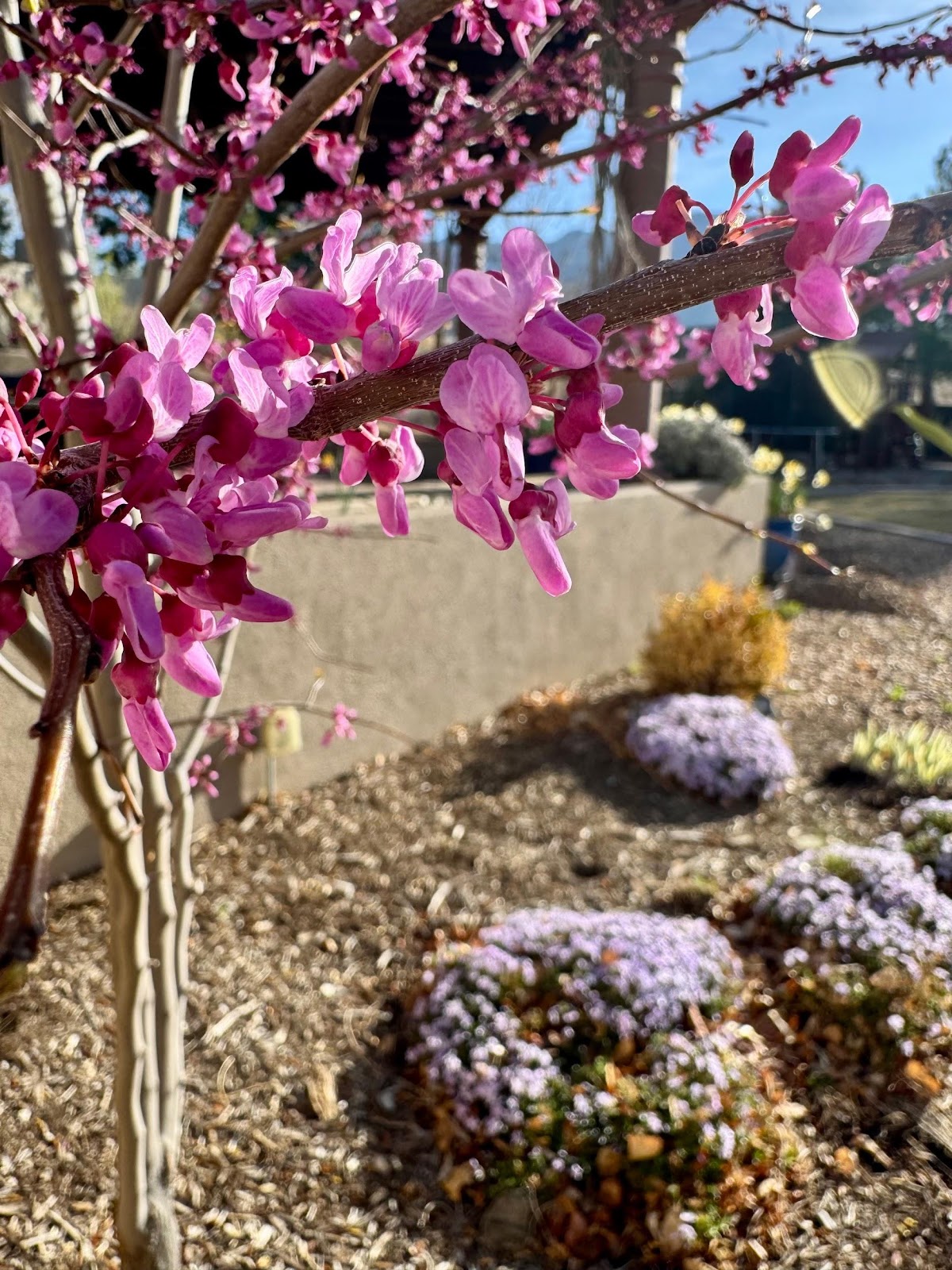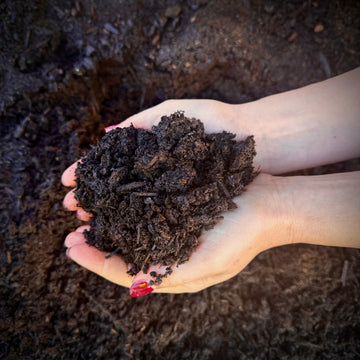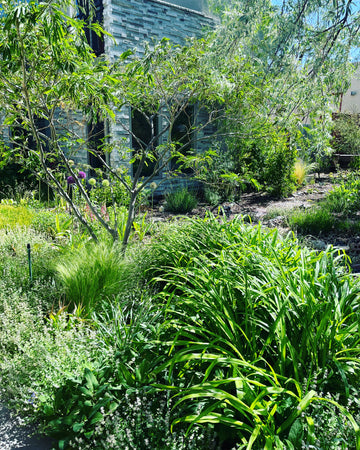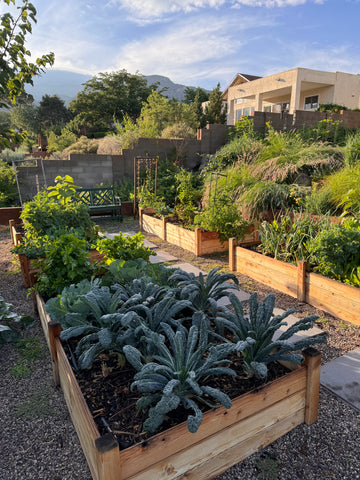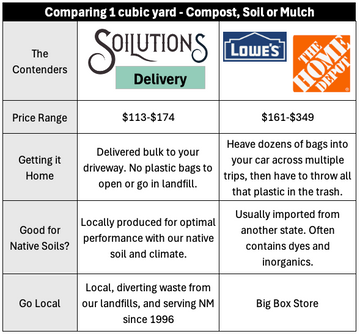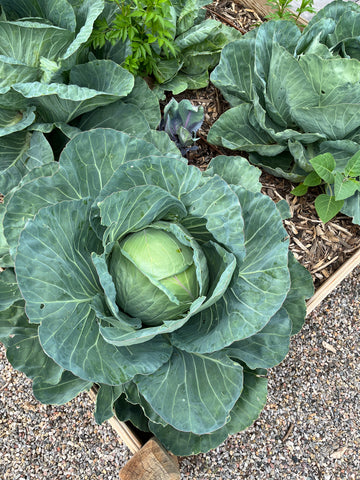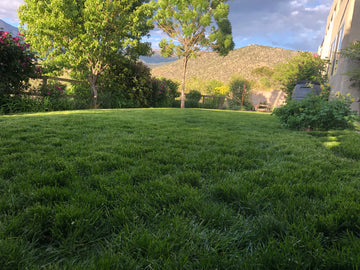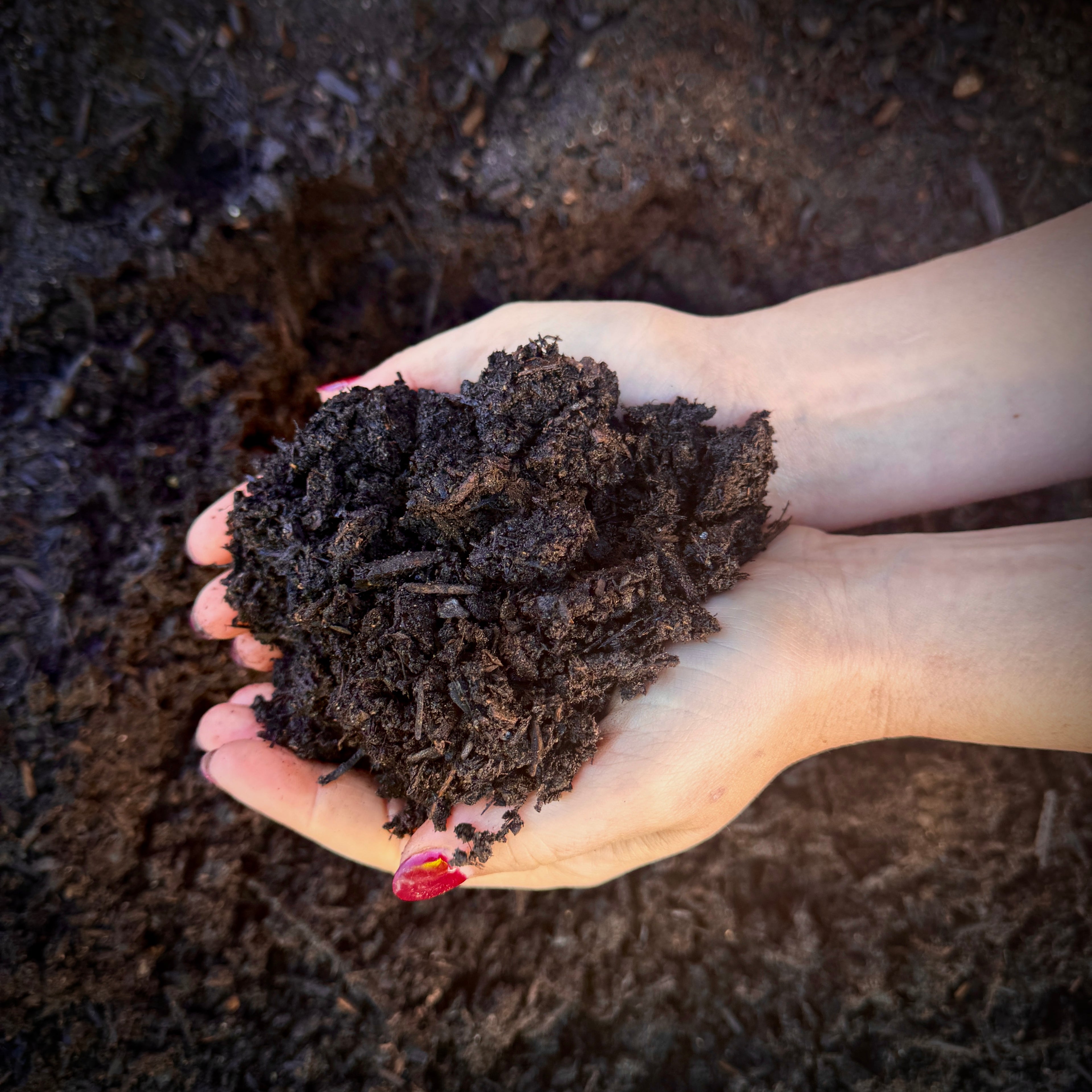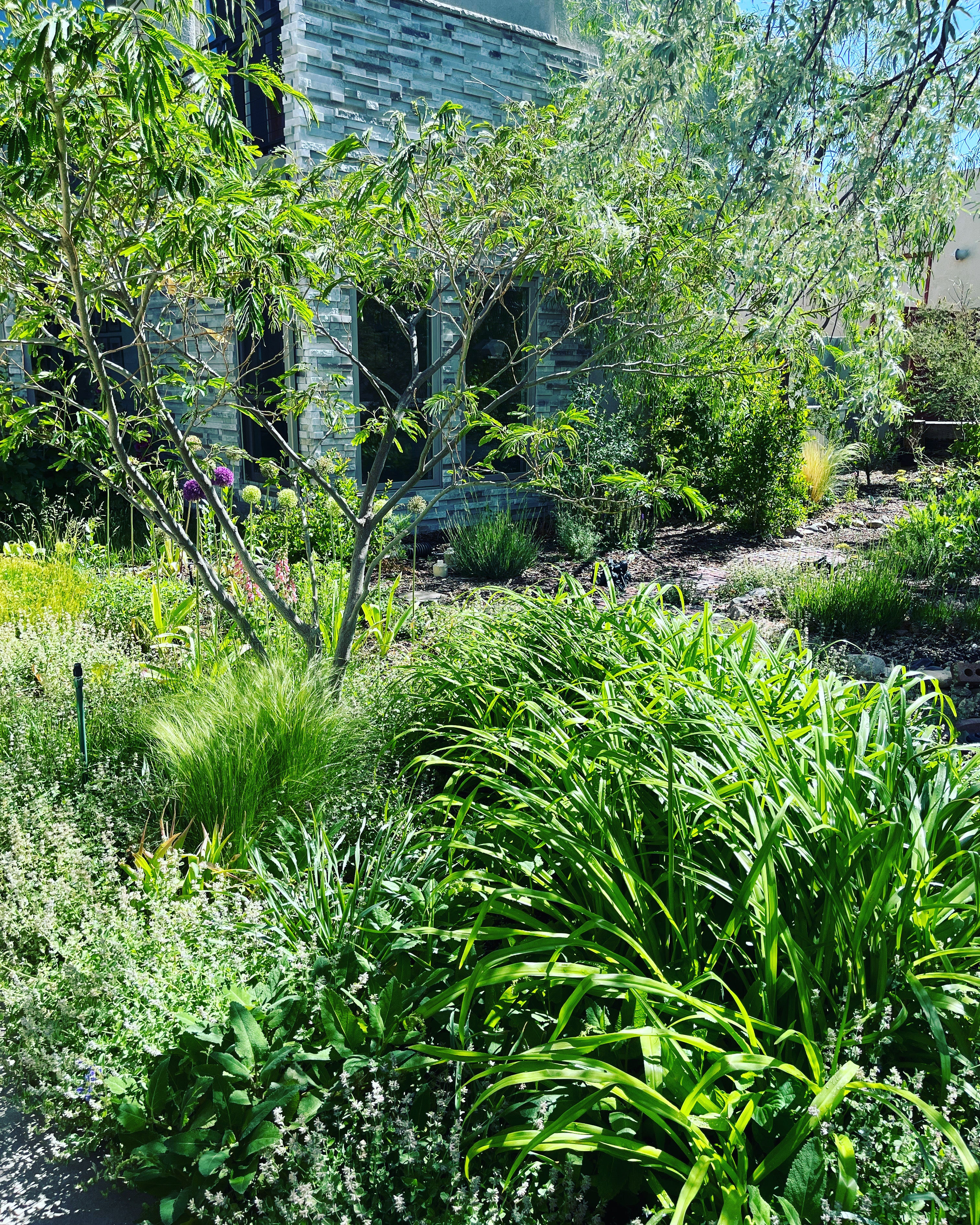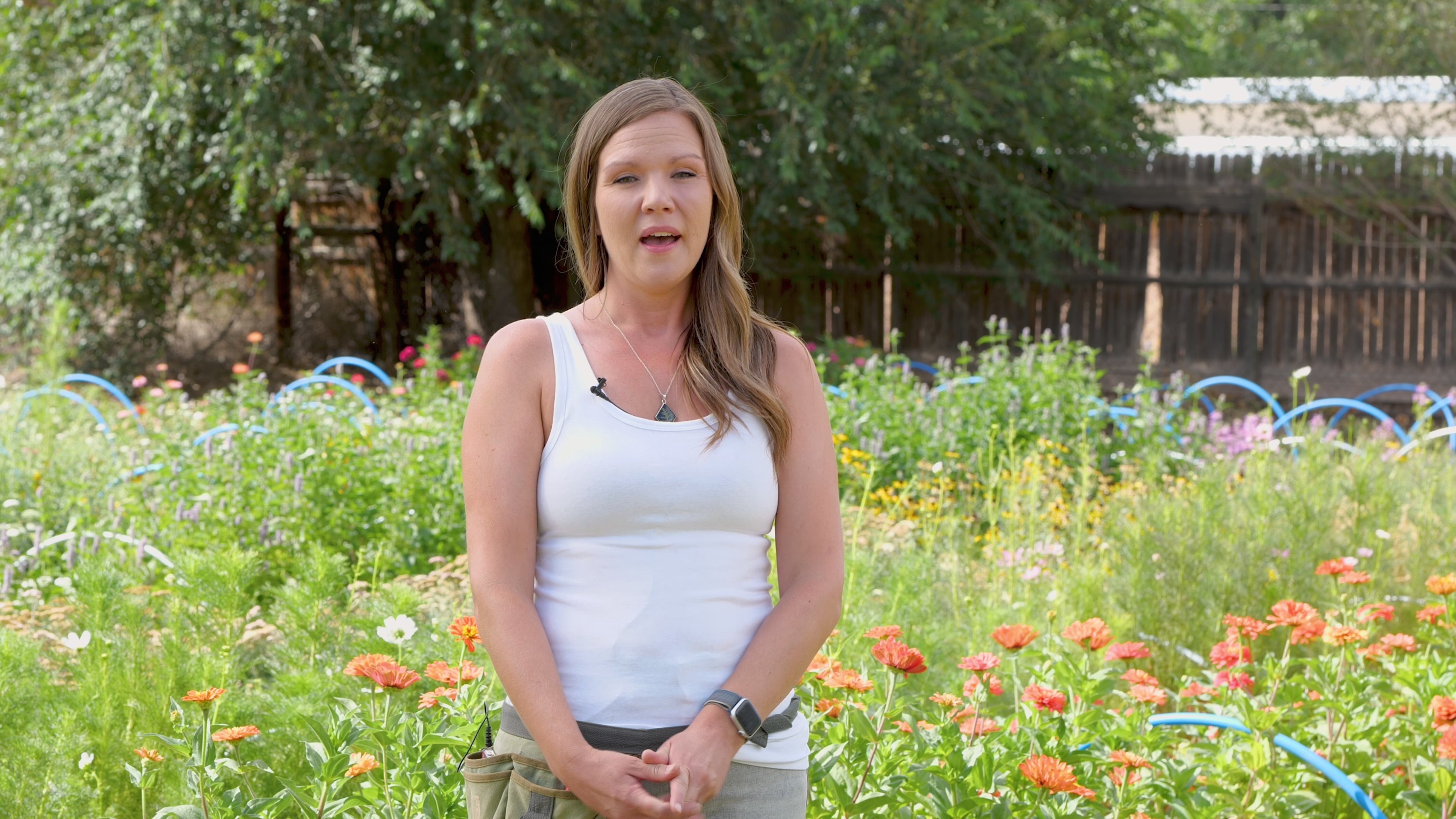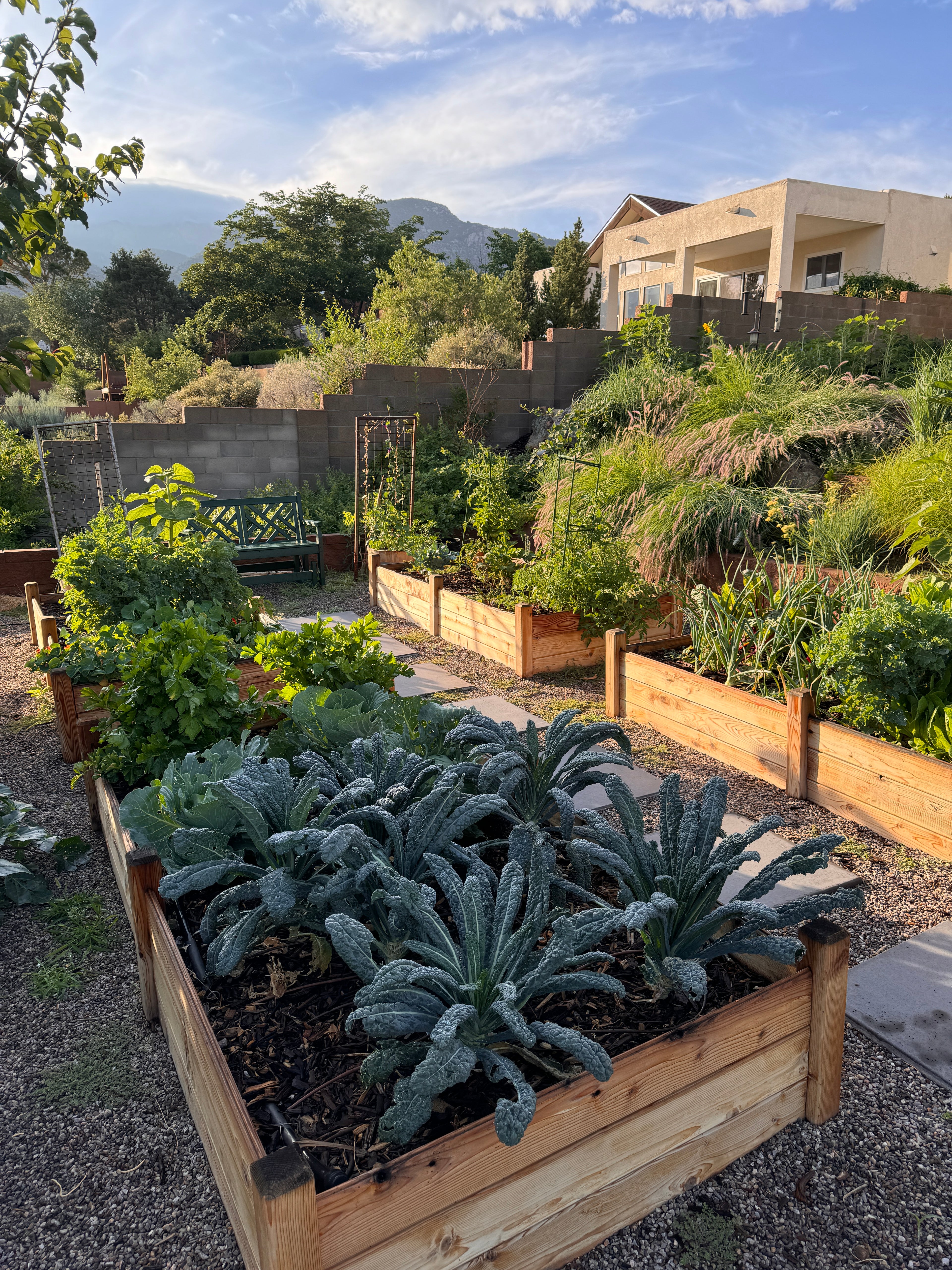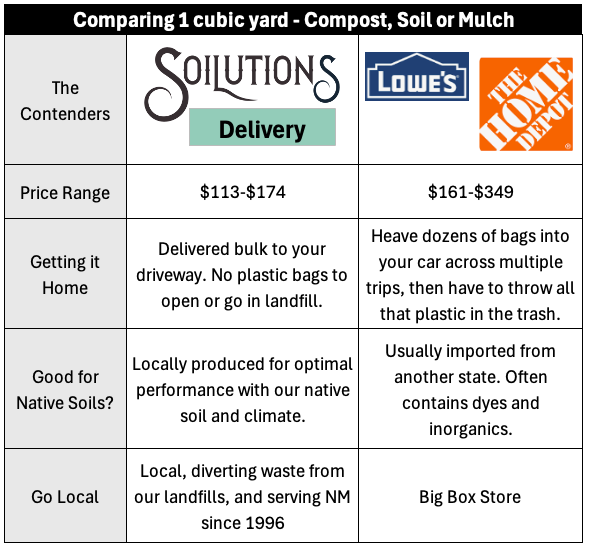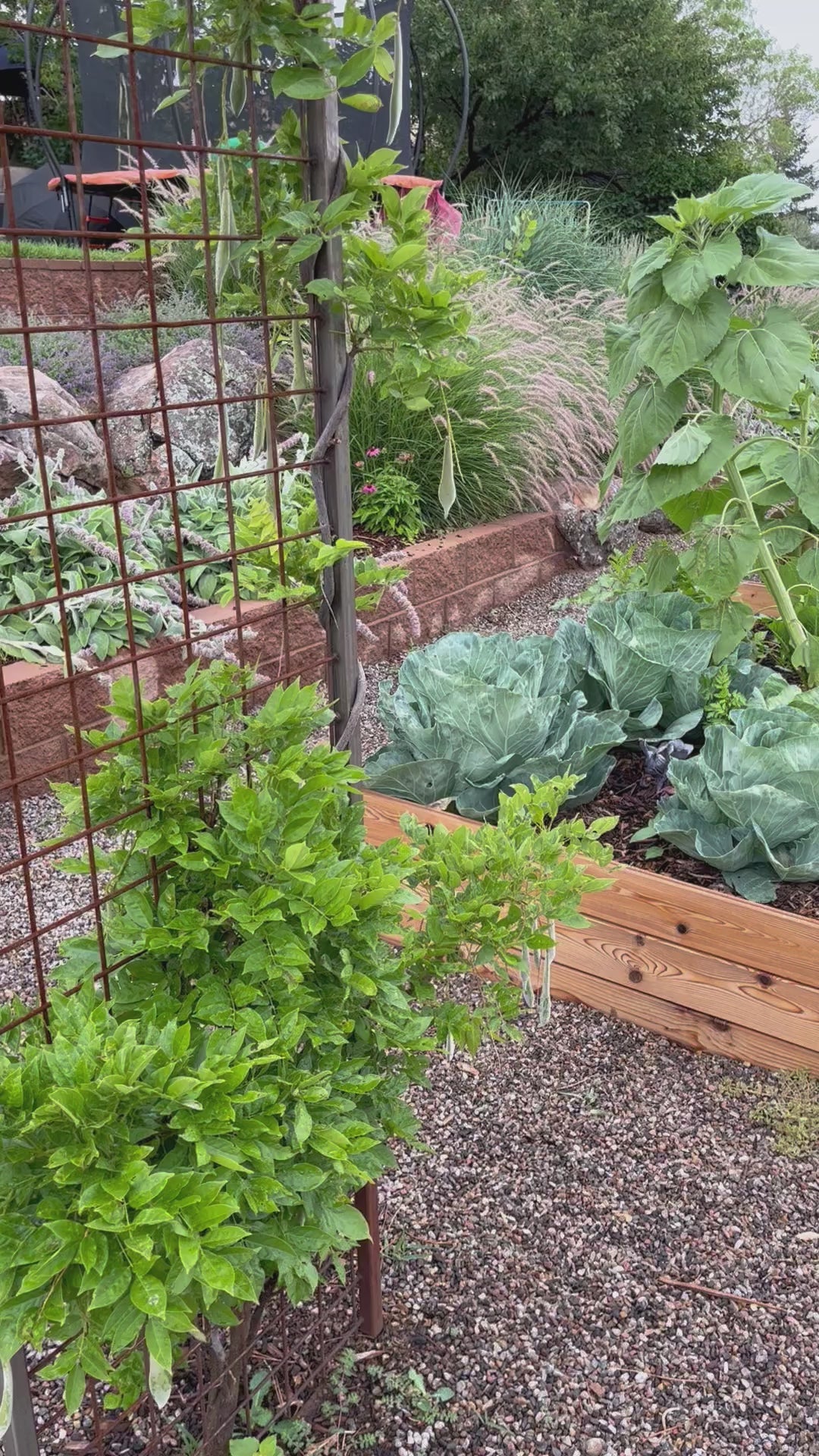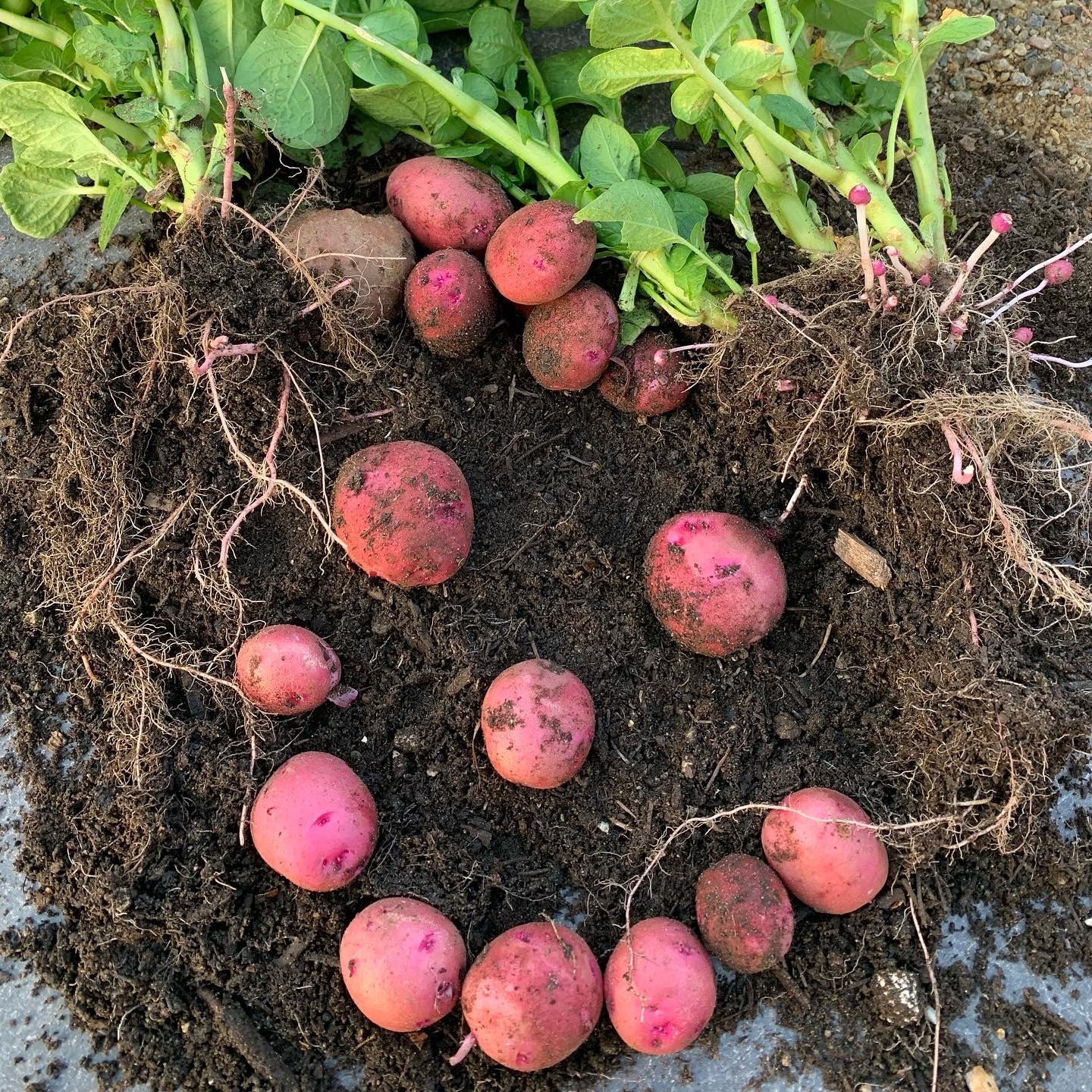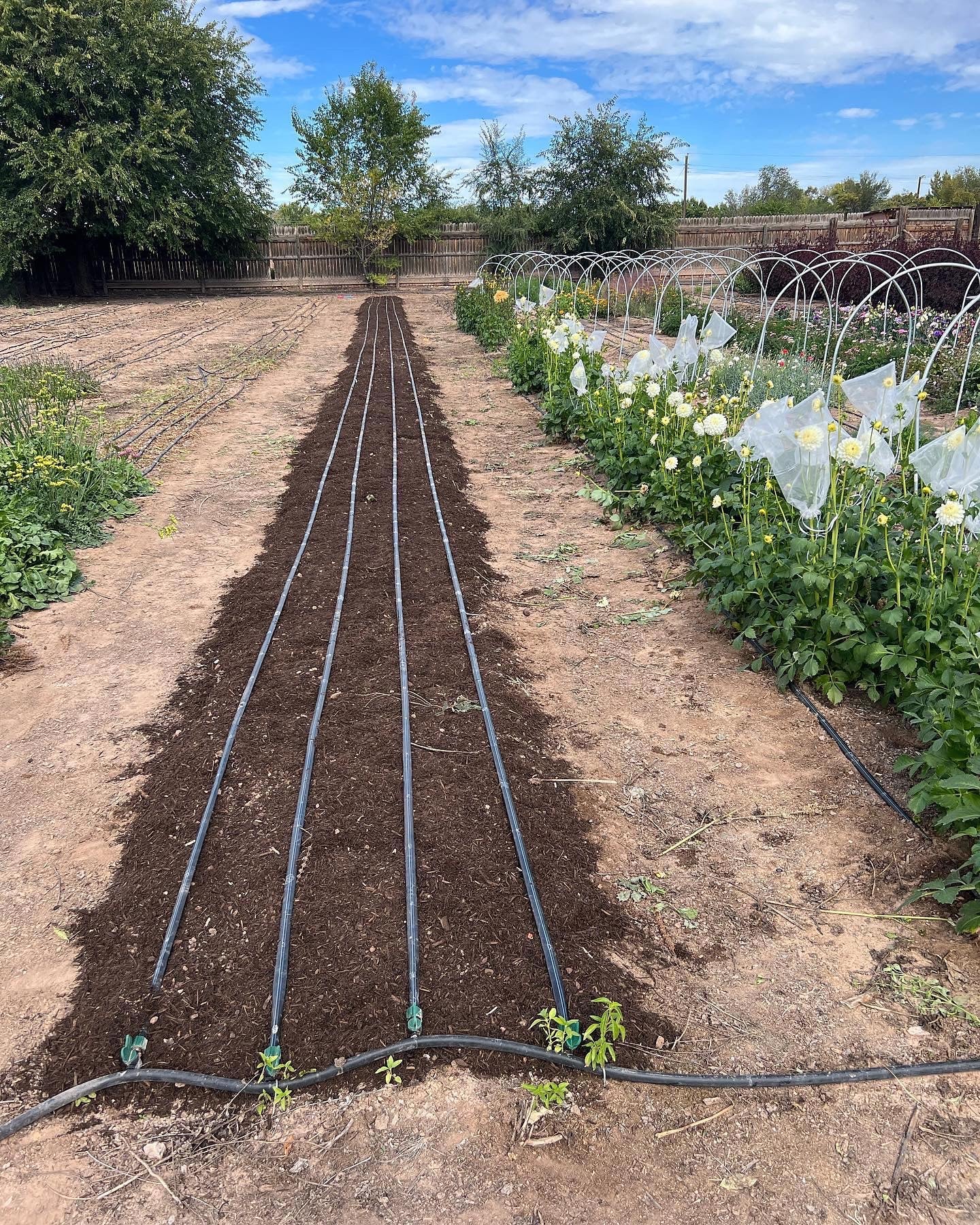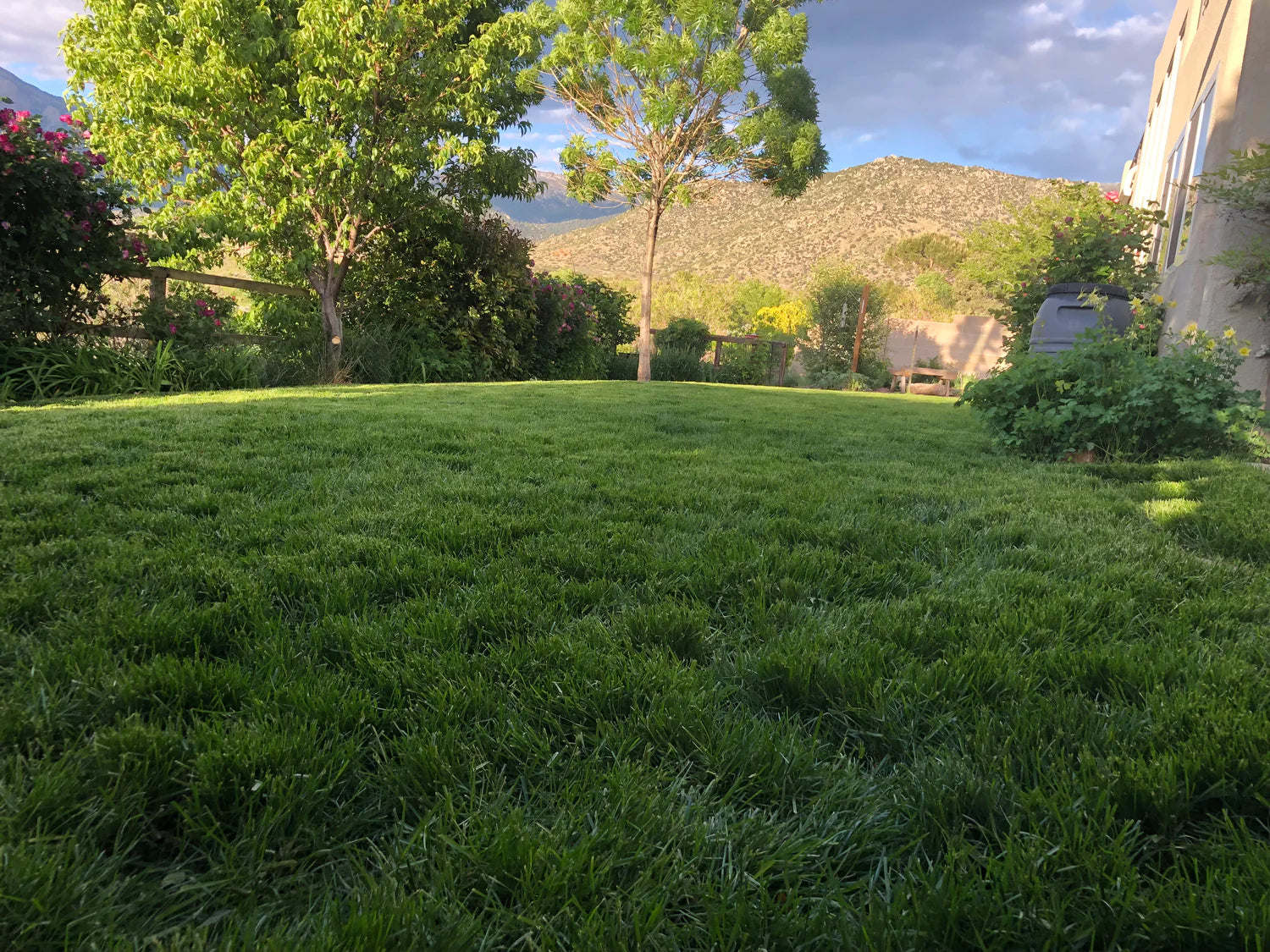By Wendy Blair, Expert Gardener, Instagram: @505garden
As spring unfolds in the high desert of New Mexico, gardeners face unique challenges and opportunities. We get quite a few bursts of warm temperatures during spring that may tempt some to get out and plant annual crops. However, we are also prone to late season frosts and high winds that can damage tender plants. Therefore it’s best not to get in the garden and plant too early. But don’t fear… there is plenty to do in the garden before the first tomato is planted! Here’s a comprehensive spring garden checklist designed specifically for high desert environments.
Vegetable beds:
-
Cut out all old growth and clear debris from your vegetable beds. If the debris has signs of pest pressure, you will want to bag it and throw it in the trash. If not, you can bring your yard waste* to Soilutions and we will turn it into compost! If you didn’t complete this task in the fall, now is the time!
-
Prepare your soil for a new season of growth. Enhance soil fertility and water retention by adding a 2” layer of compost to the top of cleaned out beds. There is no need to work the compost into the soil. Just place it on top and water it in. Now your soil is ready for planting!
-
Check irrigation lines to make sure they are working properly. You will want to turn on your irrigation and check for cracked or clogged lines. Both the lack of, as well as too much water is detrimental to a thriving garden.
Flower beds:
Perennial plant (Shasta Daisy) with last season’s foliage and new spring growth
-
Prepare your landscape trees, shrubs and perennials for the new growing season. In flower beds you will want to cut down old growth from all ornamental grasses and perennial plants as they will start to push new growth in the spring.
-
Check for any tree branches that might have been damaged over the winter. You will want to prune out any dead or broken limbs.
-
Now is the time to remove leaves from the ground if you haven’t done so already. Most pollinators have woken up from their winter hibernation and it's safe to clear unwanted leaf debris.
-
High desert soils often lack organic matter and may be sandy or compacted. Adding a layer of compost around your trees, shrubs and perennial plants improves soil structure and provides essential nutrients for plant growth.
-
It’s also a good time to add some high phosphorus amendments to any summer blooming plants such as roses, rose of sharon, crape myrtle and hydrangeas. We recommend our all natural Blooming Boost.
-
Must add mulch! Applying mulch helps retain soil moisture, regulates temperature, and suppresses weeds. Our garden staff recommends using only organic mulch! Using materials like wood chips, pecan mulch or our composted Forest Floor Mulch around plants to a depth of 2-3 inches not only conserves moisture but also adds organic matter as it decomposes.
Implement Efficient Watering Practices:
-
Water management is vital in arid regions. Installing a drip irrigation system is the most efficient way to water a high desert garden. Drip irrigation delivers water directly to plant roots minimizing evaporation and most importantly, water waste.
-
Make a watering schedule for your garden. The simplest and most waterwise schedule is to water early in the morning or late in the evening to reduce evaporation losses. More detailed information on watering schedules can be found on the Albuquerque Water Authority’s website at 505outside.com.
Prune and Maintain Plants:
-
Proper pruning encourages healthy growth and flowering! Now is the time to prune rose bushes as well as fruit trees, grapevines and raspberry/blackberry bushes.
Manage Weeds Early!
-
Weeds compete with desirable plants for nutrients and water. Early intervention is the key to managing weeds in your landscape! Remove early winter and spring grown weeds when they are small and manageable. Then, do your best to pull them as they appear. This way you can avoid a bumper crop of weeds come the summer. Spraying weeds with herbicides is not recommended as the weed killer can be carried by the wind to your landscape plants.
-
Mulching: As mentioned, mulch acts as a barrier to weed growth while retaining soil moisture.
Protect Plants from Temperature Extremes:
-
Frost Protection: Be prepared to cover tender plants with frost cloths or row covers during unexpected late frosts.
-
Shade Provision: As temperatures rise, consider using shade cloths to protect plants from intense midday sun. Our UV is much greater at elevation so many plants that are tagged for “full sun”, can’t handle our full New Mexico sun. It's not as much of an issue in the spring when the sun is lower in the sky, but it becomes a huge issue in the summer. Be prepared!
Encourage Beneficial Wildlife:
Diversify your landscape with plants that attract pollinators and pest predators. This is especially important near your vegetable garden where pollinators are essential to a bountiful harvest!
-
Include plants that provide nectar and habitat for bees, butterflies, and birds. Sunflowers, nasturtiums, and marigolds are great choices to incorporate in your vegetable garden.
-
Avoid Pesticides: Minimize or eliminate pesticide use to protect beneficial insects.
Plan and Plant Appropriately:
Timing and plant selection are crucial in the high desert:
-
Cool-Season Crops: In early spring, plant cool-season vegetables like peas, lettuce, and radishes as soon as the soil is workable.
-
Warm-Season Crops: Wait until the danger of frost has passed before planting warm-season crops such as tomatoes, peppers, and squash. In Albuquerque, this is typically after mid-May.
-
Native and Drought-Tolerant Plants: Incorporate native plants and drought-resistant varieties to your landscape. These plants are well-adapted to the high desert climate, reducing water needs and increasing resilience.
By following this checklist, gardeners in high desert climates can create and maintain a vibrant, resilient garden that thrives despite the challenges posed by the arid environment.
*Soilutions takes clean green waste for free! Drop off tree trimmings, leaves, even weeds at our yard in the South Valley during business hours. No trash or sod please.


